“ Spot-Welding Technology and the Development of Robotics

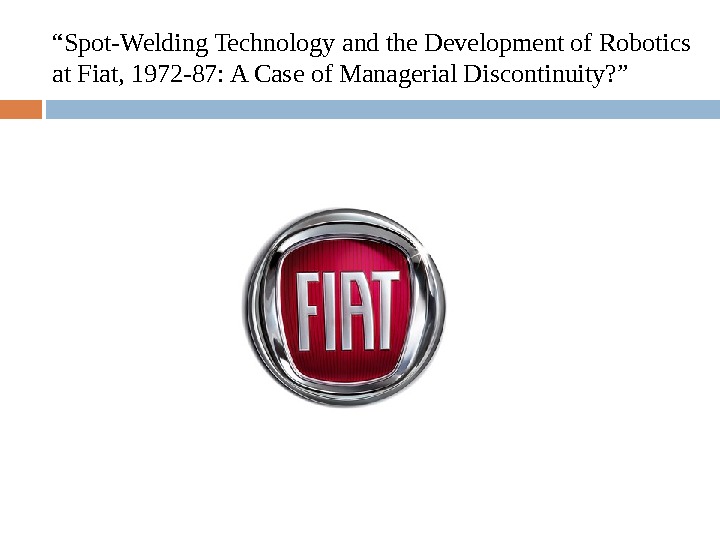
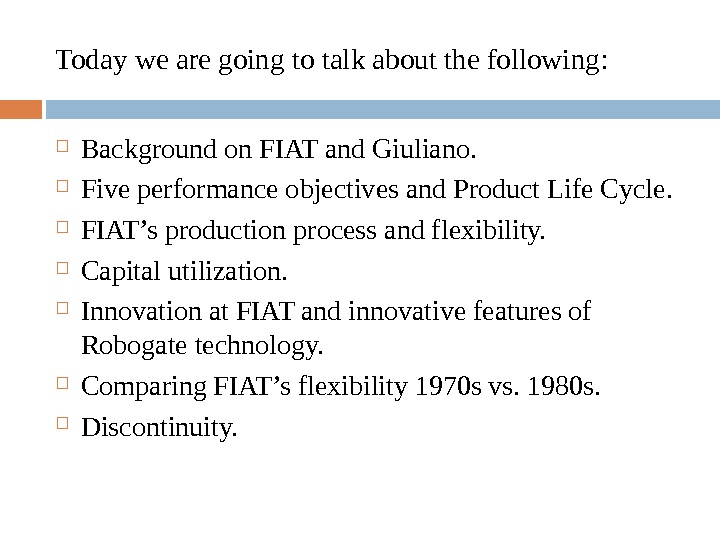
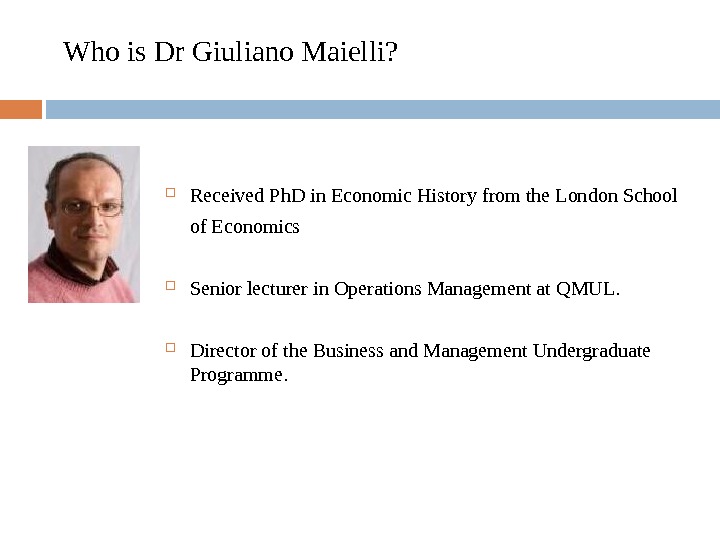
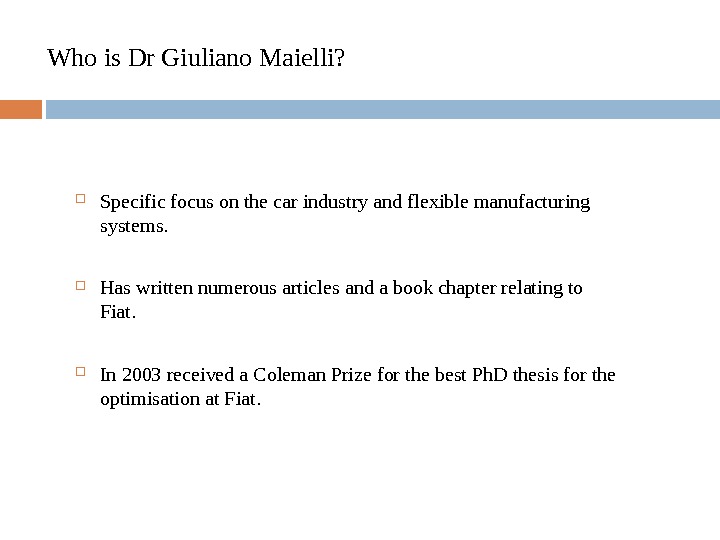
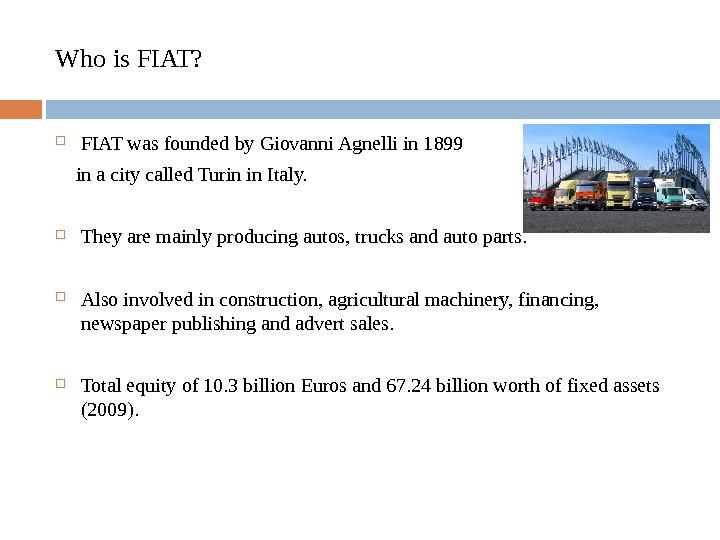
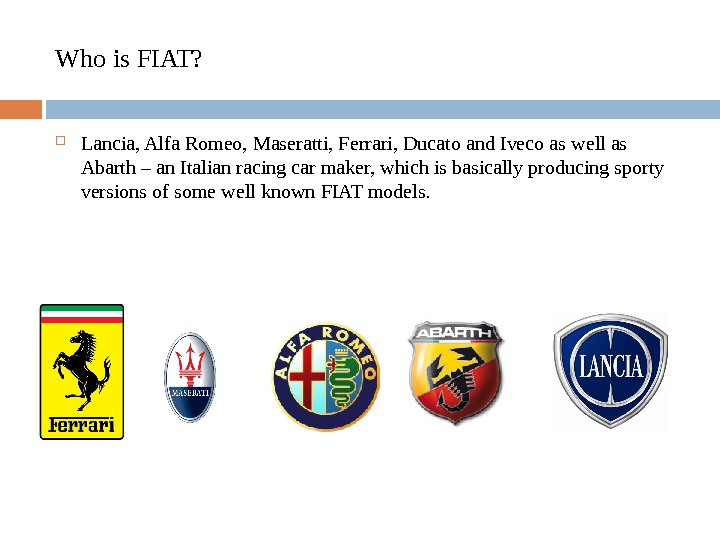
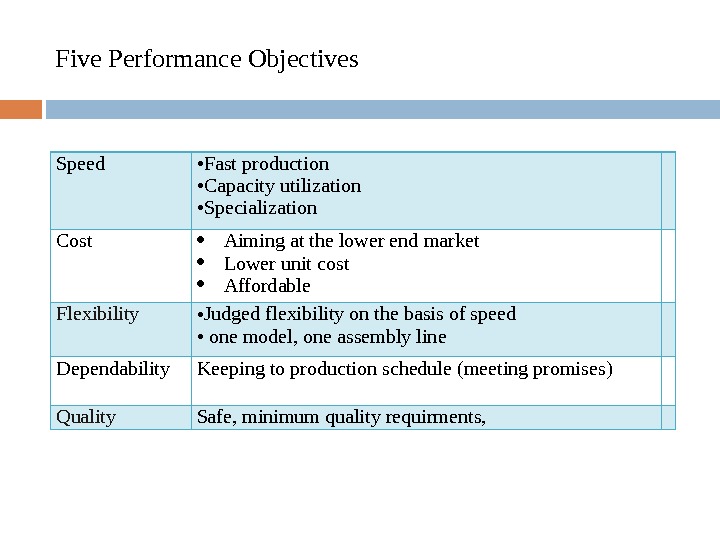
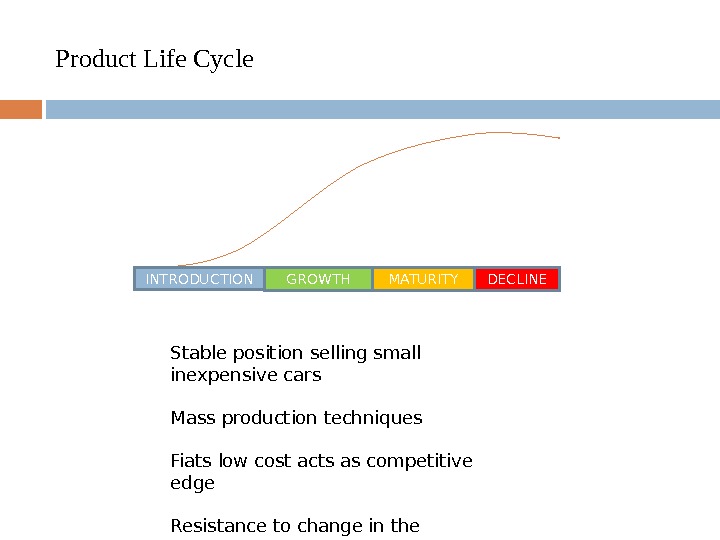
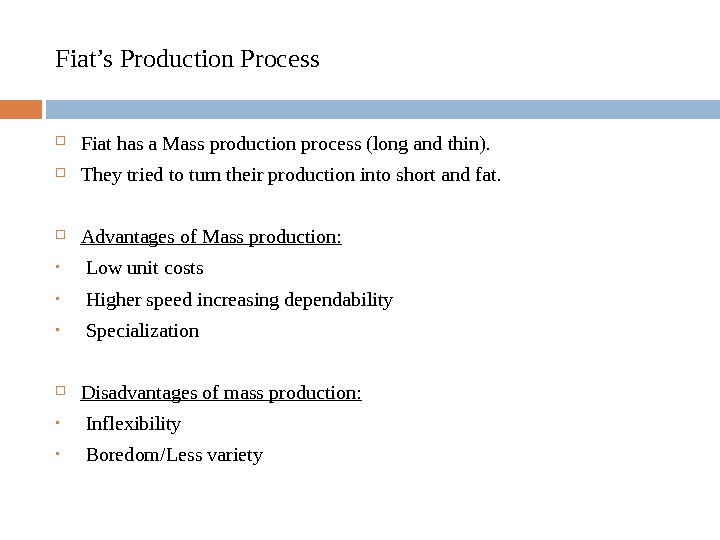
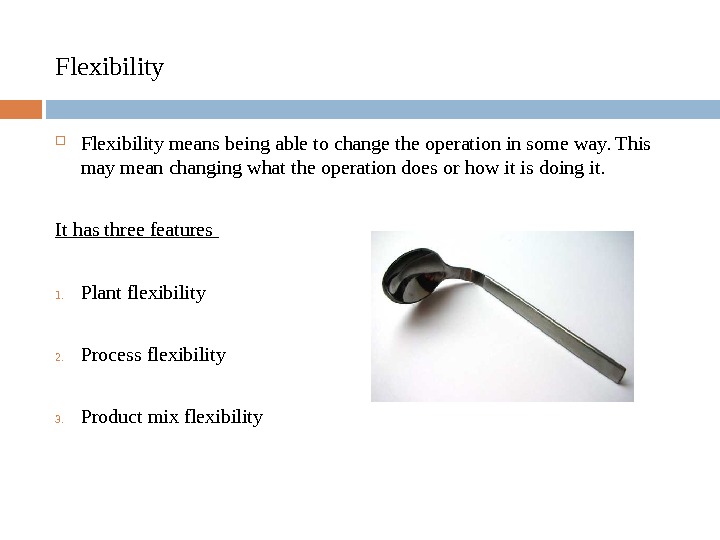
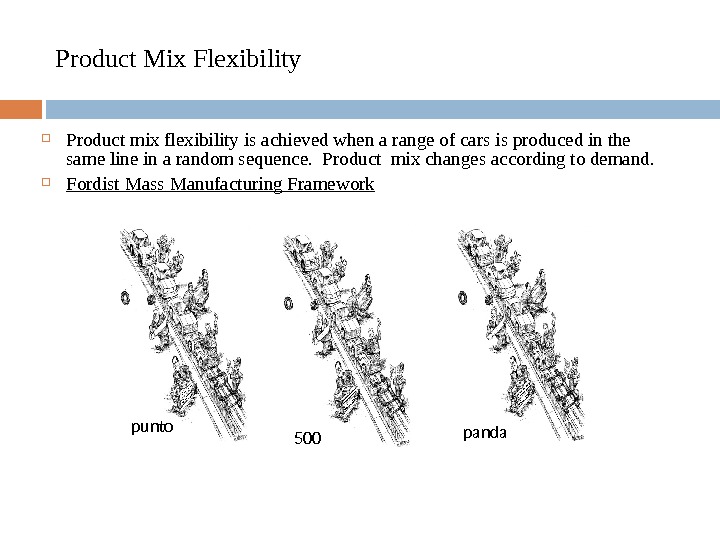
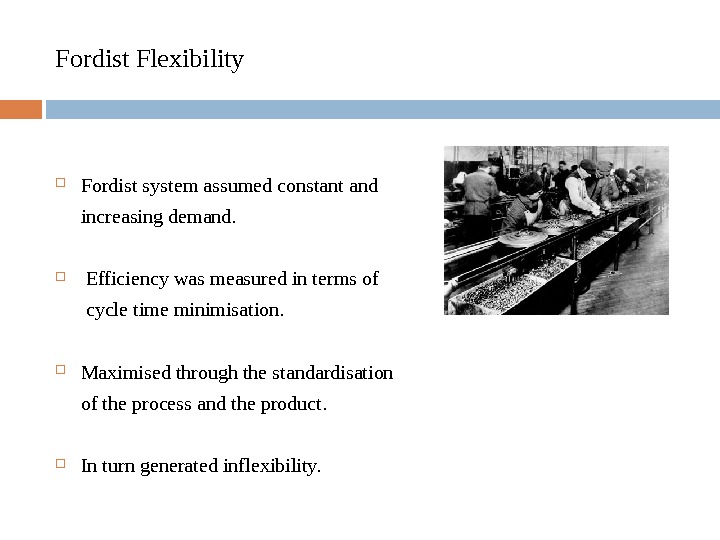
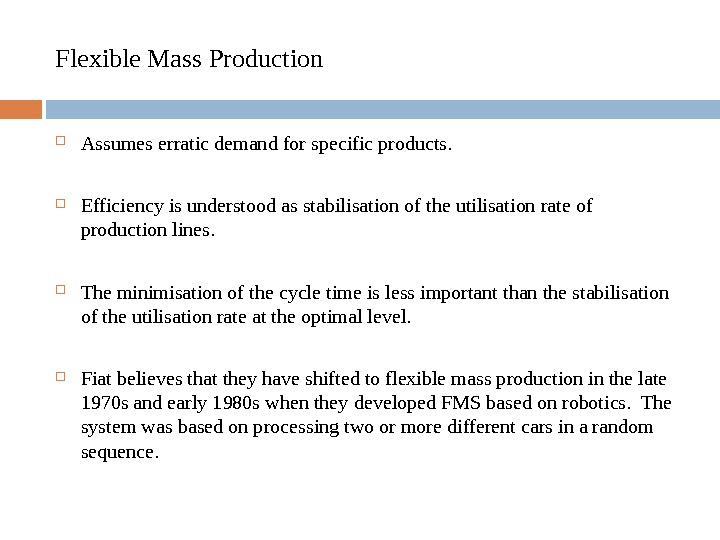
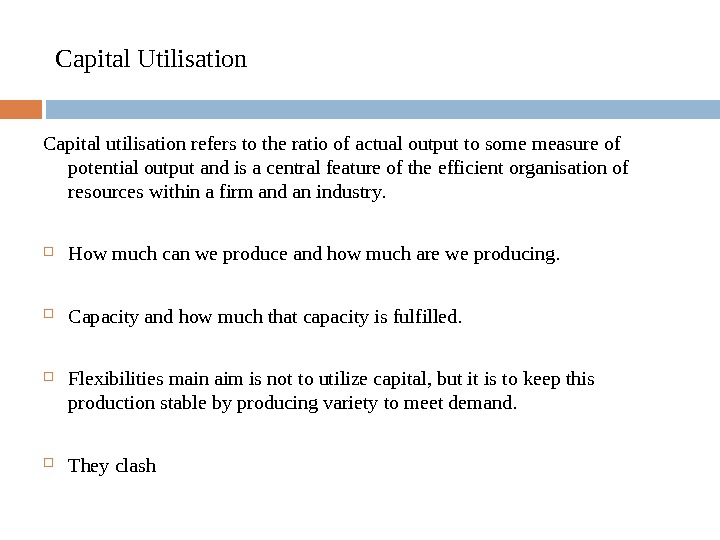
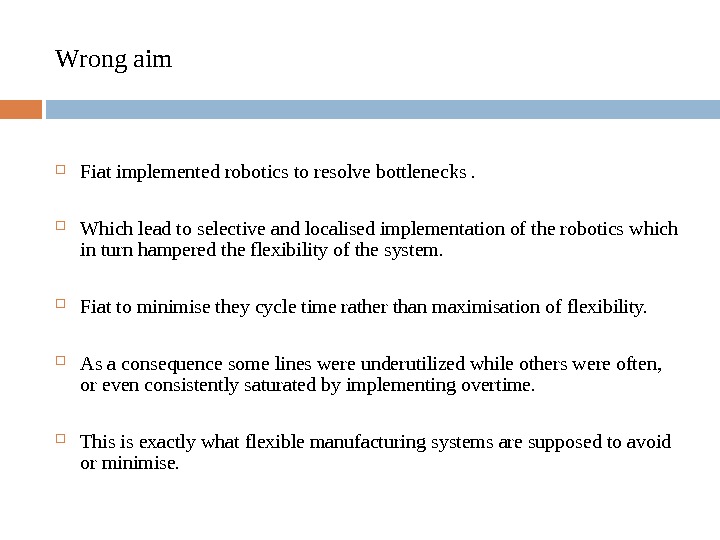
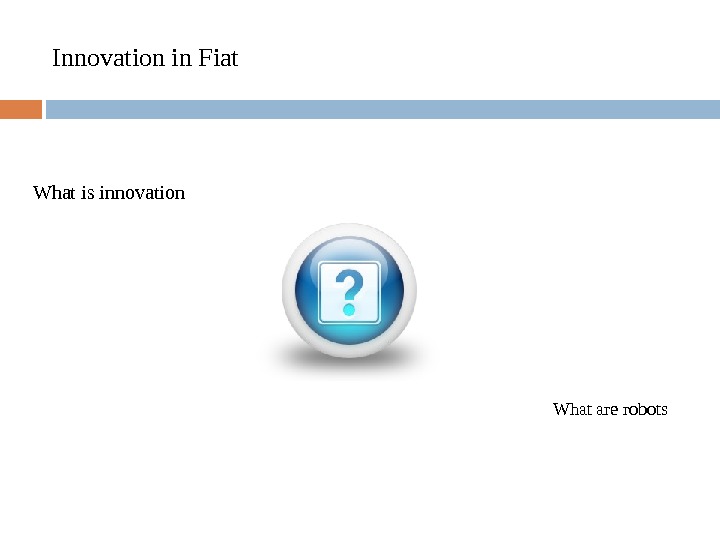
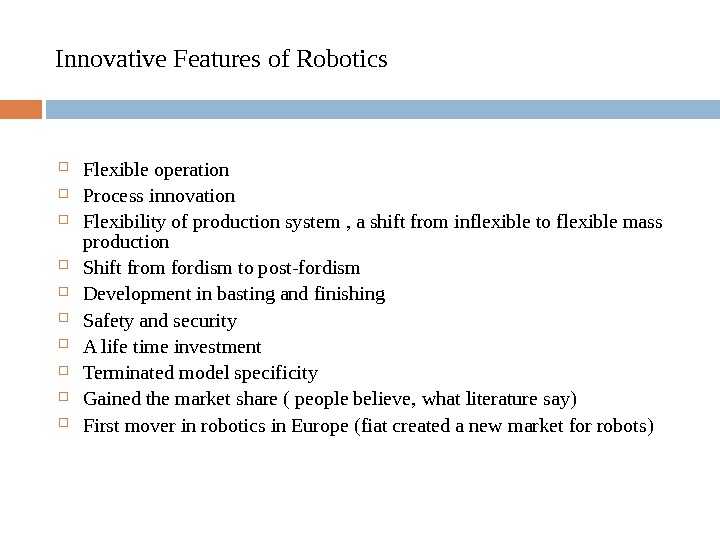
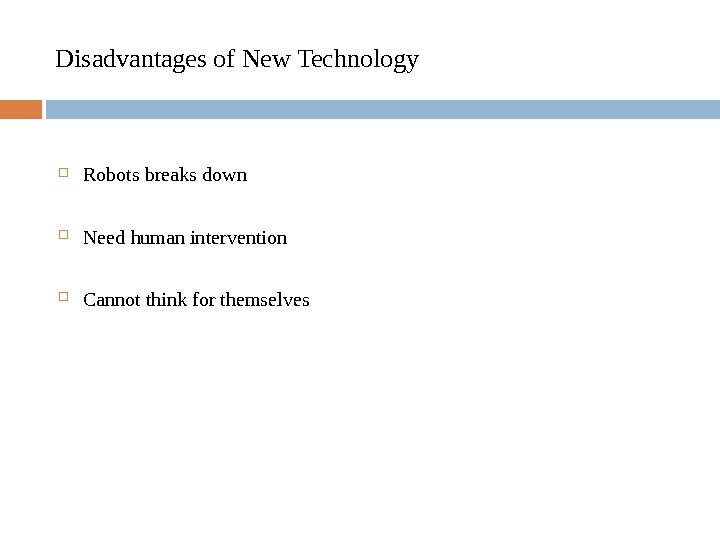
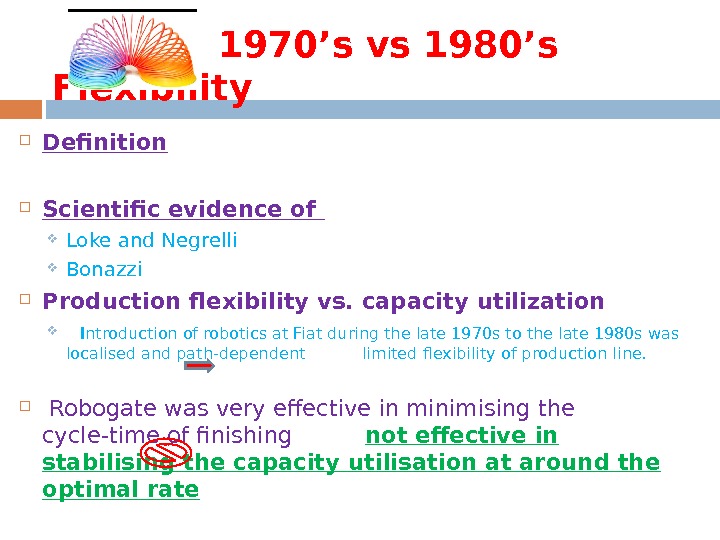
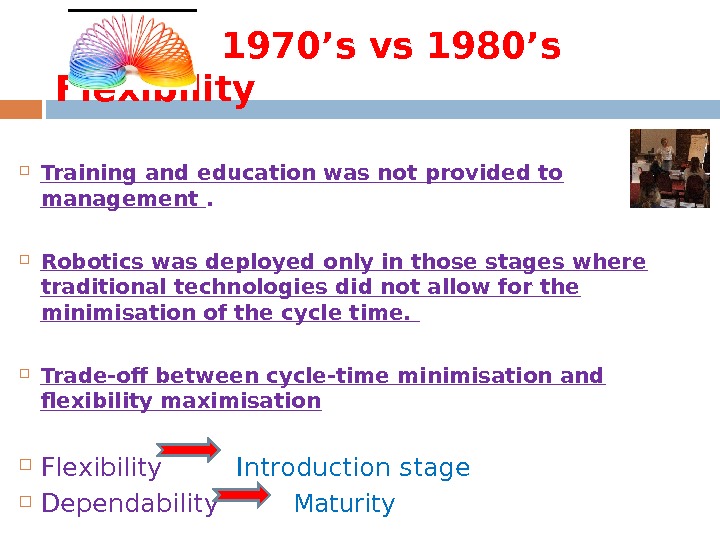
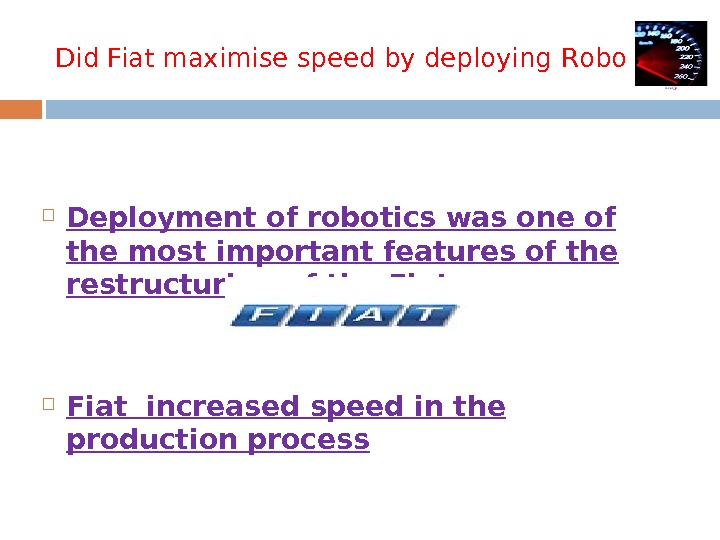
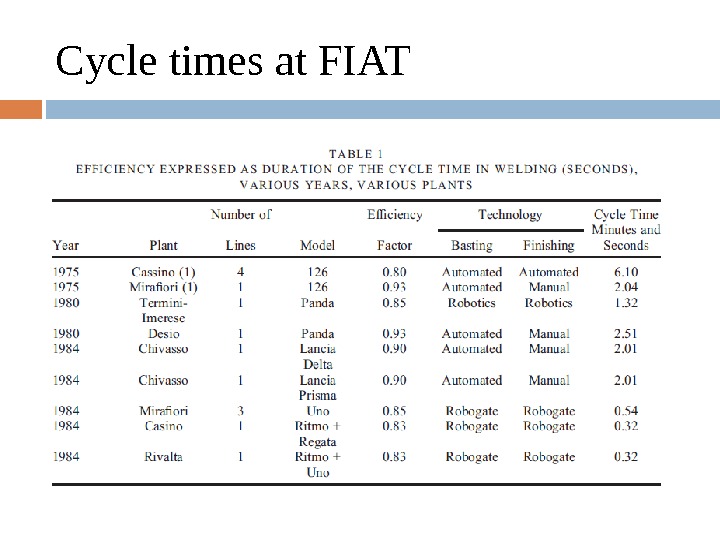
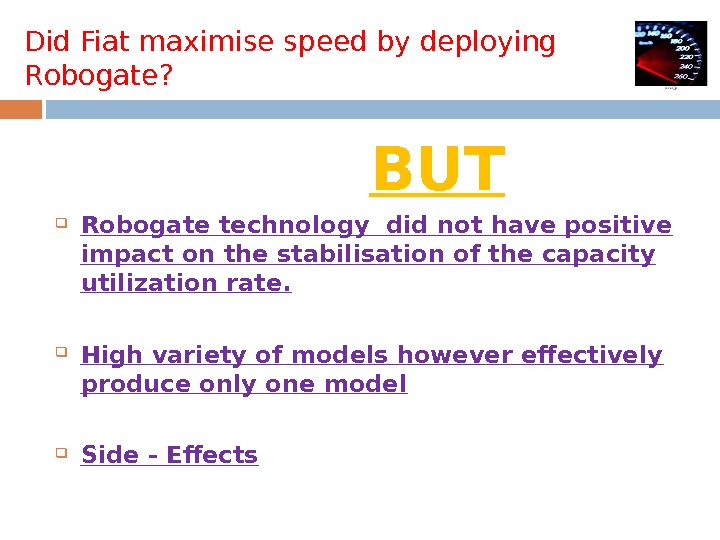
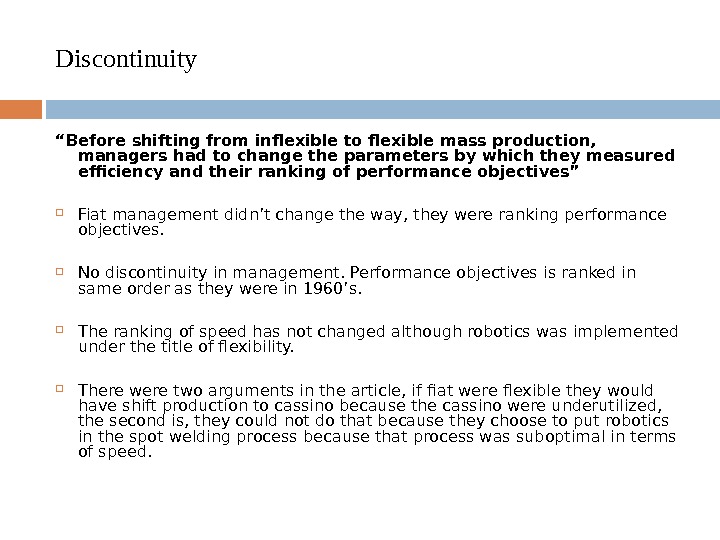
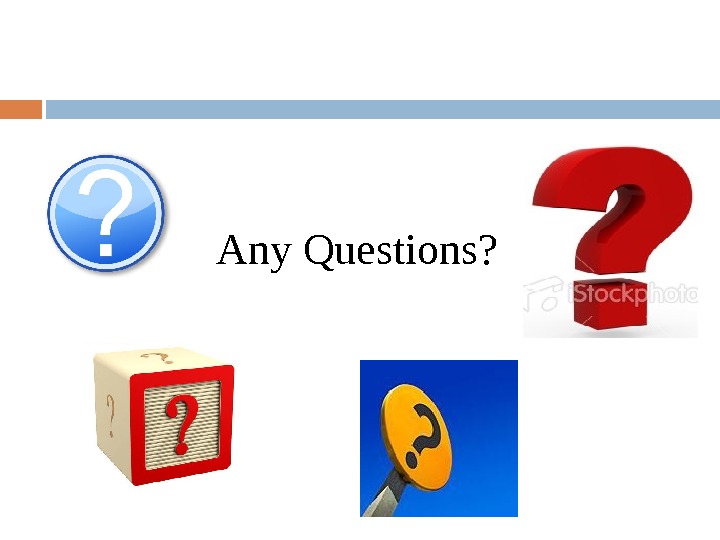

- Размер: 1.6 Mегабайта
- Количество слайдов: 26
Описание презентации “ Spot-Welding Technology and the Development of Robotics по слайдам
 “ Spot-Welding Technology and the Development of Robotics at Fiat, 1972 -87: A Case of Managerial Discontinuity? ”
“ Spot-Welding Technology and the Development of Robotics at Fiat, 1972 -87: A Case of Managerial Discontinuity? ”
 Today we are going to talk about the following: Background on FIAT and Giuliano. Five performance objectives and Product Life Cycle. FIAT’s production process and flexibility. Capital utilization. Innovation at FIAT and innovative features of Robogate technology. Comparing FIAT’s flexibility 1970 s vs. 1980 s. Discontinuity.
Today we are going to talk about the following: Background on FIAT and Giuliano. Five performance objectives and Product Life Cycle. FIAT’s production process and flexibility. Capital utilization. Innovation at FIAT and innovative features of Robogate technology. Comparing FIAT’s flexibility 1970 s vs. 1980 s. Discontinuity.
 Who is Dr Giuliano Maielli? Received Ph. D in Economic History from the London School of Economics Senior lecturer in Operations Management at QMUL. Director of the Business and Management Undergraduate Programme.
Who is Dr Giuliano Maielli? Received Ph. D in Economic History from the London School of Economics Senior lecturer in Operations Management at QMUL. Director of the Business and Management Undergraduate Programme.
 Who is Dr Giuliano Maielli? Specific focus on the car industry and flexible manufacturing systems. Has written numerous articles and a book chapter relating to Fiat. In 2003 received a Coleman Prize for the best Ph. D thesis for the optimisation at Fiat.
Who is Dr Giuliano Maielli? Specific focus on the car industry and flexible manufacturing systems. Has written numerous articles and a book chapter relating to Fiat. In 2003 received a Coleman Prize for the best Ph. D thesis for the optimisation at Fiat.
 Who is FIAT? FIAT was founded by Giovanni Agnelli in 1899 in a city called Turin in Italy. They are mainly producing autos, trucks and auto parts. Also involved in construction, agricultural machinery, financing, newspaper publishing and advert sales. Total equity of 10. 3 billion Euros and 67. 24 billion worth of fixed assets (2009).
Who is FIAT? FIAT was founded by Giovanni Agnelli in 1899 in a city called Turin in Italy. They are mainly producing autos, trucks and auto parts. Also involved in construction, agricultural machinery, financing, newspaper publishing and advert sales. Total equity of 10. 3 billion Euros and 67. 24 billion worth of fixed assets (2009).
 Who is FIAT? Lancia, Alfa Romeo, Maseratti, Ferrari, Ducato and Iveco as well as Abarth – an Italian racing car maker, which is basically producing sporty versions of some well known FIAT models.
Who is FIAT? Lancia, Alfa Romeo, Maseratti, Ferrari, Ducato and Iveco as well as Abarth – an Italian racing car maker, which is basically producing sporty versions of some well known FIAT models.
 Five Performance Objectives Speed • Fast production • Capacity utilization • Specialization Cost Aiming at the lower end market Lower unit cost Affordable Flexibility • Judged flexibility on the basis of speed • one model, one assembly line Dependability Keeping to production schedule (meeting promises) Quality Safe, minimum quality requirments,
Five Performance Objectives Speed • Fast production • Capacity utilization • Specialization Cost Aiming at the lower end market Lower unit cost Affordable Flexibility • Judged flexibility on the basis of speed • one model, one assembly line Dependability Keeping to production schedule (meeting promises) Quality Safe, minimum quality requirments,
 Product Life Cycle INTRODUCTION GROWTH MATURITY DECLINE Stable position selling small inexpensive cars Mass production techniques Fiats low cost acts as competitive edge Resistance to change in the workplace
Product Life Cycle INTRODUCTION GROWTH MATURITY DECLINE Stable position selling small inexpensive cars Mass production techniques Fiats low cost acts as competitive edge Resistance to change in the workplace
 Fiat’s Production Process Fiat has a Mass production process (long and thin). They tried to turn their production into short and fat. Advantages of Mass production: • Low unit costs • Higher speed increasing dependability • Specialization Disadvantages of mass production: • Inflexibility • Boredom/Less variety
Fiat’s Production Process Fiat has a Mass production process (long and thin). They tried to turn their production into short and fat. Advantages of Mass production: • Low unit costs • Higher speed increasing dependability • Specialization Disadvantages of mass production: • Inflexibility • Boredom/Less variety
 Flexibility means being able to change the operation in some way. This may mean changing what the operation does or how it is doing it. It has three features 1. Plant flexibility 2. Process flexibility 3. Product mix flexibility
Flexibility means being able to change the operation in some way. This may mean changing what the operation does or how it is doing it. It has three features 1. Plant flexibility 2. Process flexibility 3. Product mix flexibility
 Product Mix Flexibility Product mix flexibility is achieved when a range of cars is produced in the same line in a random sequence. Product mix changes according to demand. Fordist Mass Manufacturing Framework punto 500 panda
Product Mix Flexibility Product mix flexibility is achieved when a range of cars is produced in the same line in a random sequence. Product mix changes according to demand. Fordist Mass Manufacturing Framework punto 500 panda
 Fordist Flexibility Fordist system assumed constant and increasing demand. Efficiency was measured in terms of cycle time minimisation. Maximised through the standardisation of the process and the product. In turn generated inflexibility.
Fordist Flexibility Fordist system assumed constant and increasing demand. Efficiency was measured in terms of cycle time minimisation. Maximised through the standardisation of the process and the product. In turn generated inflexibility.
 Flexible Mass Production Assumes erratic demand for specific products. Efficiency is understood as stabilisation of the utilisation rate of production lines. The minimisation of the cycle time is less important than the stabilisation of the utilisation rate at the optimal level. Fiat believes that they have shifted to flexible mass production in the late 1970 s and early 1980 s when they developed FMS based on robotics. The system was based on processing two or more different cars in a random sequence.
Flexible Mass Production Assumes erratic demand for specific products. Efficiency is understood as stabilisation of the utilisation rate of production lines. The minimisation of the cycle time is less important than the stabilisation of the utilisation rate at the optimal level. Fiat believes that they have shifted to flexible mass production in the late 1970 s and early 1980 s when they developed FMS based on robotics. The system was based on processing two or more different cars in a random sequence.
 Capital Utilisation Capital utilisation refers to the ratio of actual output to some measure of potential output and is a central feature of the efficient organisation of resources within a firm and an industry. How much can we produce and how much are we producing. Capacity and how much that capacity is fulfilled. Flexibilities main aim is not to utilize capital, but it is to keep this production stable by producing variety to meet demand. They clash
Capital Utilisation Capital utilisation refers to the ratio of actual output to some measure of potential output and is a central feature of the efficient organisation of resources within a firm and an industry. How much can we produce and how much are we producing. Capacity and how much that capacity is fulfilled. Flexibilities main aim is not to utilize capital, but it is to keep this production stable by producing variety to meet demand. They clash
 Wrong aim Fiat implemented robotics to resolve bottlenecks. Which lead to selective and localised implementation of the robotics which in turn hampered the flexibility of the system. Fiat to minimise they cycle time rather than maximisation of flexibility. As a consequence some lines were underutilized while others were often, or even consistently saturated by implementing overtime. This is exactly what flexible manufacturing systems are supposed to avoid or minimise.
Wrong aim Fiat implemented robotics to resolve bottlenecks. Which lead to selective and localised implementation of the robotics which in turn hampered the flexibility of the system. Fiat to minimise they cycle time rather than maximisation of flexibility. As a consequence some lines were underutilized while others were often, or even consistently saturated by implementing overtime. This is exactly what flexible manufacturing systems are supposed to avoid or minimise.
 Innovation in Fiat What is innovation What are robots
Innovation in Fiat What is innovation What are robots
 Innovative Features of Robotics Flexible operation Process innovation Flexibility of production system , a shift from inflexible to flexible mass production Shift from fordism to post-fordism Development in basting and finishing Safety and security A life time investment Terminated model specificity Gained the market share ( people believe, what literature say) First mover in robotics in Europe (fiat created a new market for robots)
Innovative Features of Robotics Flexible operation Process innovation Flexibility of production system , a shift from inflexible to flexible mass production Shift from fordism to post-fordism Development in basting and finishing Safety and security A life time investment Terminated model specificity Gained the market share ( people believe, what literature say) First mover in robotics in Europe (fiat created a new market for robots)
 Disadvantages of New Technology Robots breaks down Need human intervention Cannot think for themselves
Disadvantages of New Technology Robots breaks down Need human intervention Cannot think for themselves
 1970’s vs 1980’s Flexibility Definition Scientific evidence of Loke and Negrelli Bonazzi Production flexibility vs. capacity utilization I ntroduction of robotics at Fiat during the late 1970 s to the late 1980 s was localised and path-dependent limited flexibility of production line. Robogate was very effective in minimising the cycle-time of finishing not effective in stabilising the capacity utilisation at around the optimal rate
1970’s vs 1980’s Flexibility Definition Scientific evidence of Loke and Negrelli Bonazzi Production flexibility vs. capacity utilization I ntroduction of robotics at Fiat during the late 1970 s to the late 1980 s was localised and path-dependent limited flexibility of production line. Robogate was very effective in minimising the cycle-time of finishing not effective in stabilising the capacity utilisation at around the optimal rate
 Training and education was not provided to management . Robotics was deployed only in those stages where traditional technologies did not allow for the minimisation of the cycle time. Trade-off between cycle-time minimisation and flexibility maximisation Flexibility Introduction stage Dependability Maturity 1970’s vs 1980’s Flexibility
Training and education was not provided to management . Robotics was deployed only in those stages where traditional technologies did not allow for the minimisation of the cycle time. Trade-off between cycle-time minimisation and flexibility maximisation Flexibility Introduction stage Dependability Maturity 1970’s vs 1980’s Flexibility
 Did Fiat maximise speed by deploying R obogate ? Deployment of robotics was one of the most important features of the restructuring of the Fiat increased speed in the production process
Did Fiat maximise speed by deploying R obogate ? Deployment of robotics was one of the most important features of the restructuring of the Fiat increased speed in the production process
 Cycle times at FIAT
Cycle times at FIAT
 Did Fiat maximise speed by deploying R obogate ? BUT Robogate technology did not have positive impact on the stabilisation of the capacity utilization rate. High variety of models however effectively produce only one model Side — Effects
Did Fiat maximise speed by deploying R obogate ? BUT Robogate technology did not have positive impact on the stabilisation of the capacity utilization rate. High variety of models however effectively produce only one model Side — Effects
 Discontinuity “ Before shifting from inflexible to flexible mass production, managers had to change the parameters by which they measured efficiency and their ranking of performance objectives” Fiat management didn’t change the way, they were ranking performance objectives. No discontinuity in management. Performance objectives is ranked in same order as they were in 1960’s. The ranking of speed has not changed although robotics was implemented under the title of flexibility. There were two arguments in the article, if fiat were flexible they would have shift production to cassino because the cassino were underutilized, the second is, they could not do that because they choose to put robotics in the spot welding process because that process was suboptimal in terms of speed.
Discontinuity “ Before shifting from inflexible to flexible mass production, managers had to change the parameters by which they measured efficiency and their ranking of performance objectives” Fiat management didn’t change the way, they were ranking performance objectives. No discontinuity in management. Performance objectives is ranked in same order as they were in 1960’s. The ranking of speed has not changed although robotics was implemented under the title of flexibility. There were two arguments in the article, if fiat were flexible they would have shift production to cassino because the cassino were underutilized, the second is, they could not do that because they choose to put robotics in the spot welding process because that process was suboptimal in terms of speed.
 Any Questions?
Any Questions?
 Thank you for listening!
Thank you for listening!

